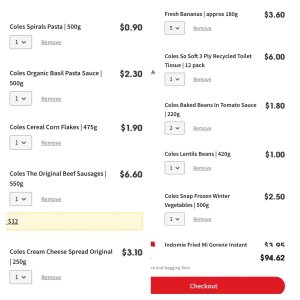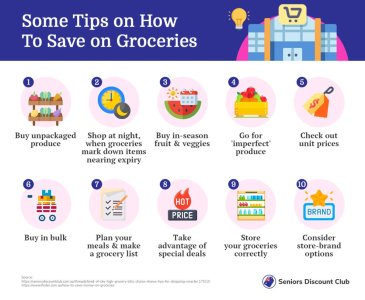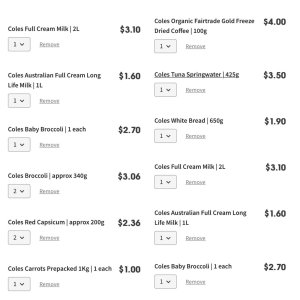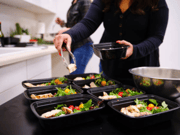Centrelink recipient shares $100 fortnightly grocery haul: 'People who believe Jobseekers are out here living the life are wrong'
- Replies 62
Groceries have gotten more expensive these days. No matter how carefully you shop, the cost of essentials, especially food items, can eat away at your budget.
So, when it comes to the regular grocery shop, it can be overwhelming, especially for those barely managing to keep afloat.
Recently, a Centrelink recipient shared her $100 fortnightly grocery haul on the social networking site Twitter to show the food you can get on a tight budget.
‘I thought I'd share what my shopping looks like,’ she said. ‘This is for a fortnight. People who believe Jobseekers are out here living the high life are wrong.’
The woman’s 39-item shopping list at Coles consisted mostly of store-brand items such as milk, vegetables, bread, coffee, cereal, and canned goods. She also bought some pasta, pasta sauce, a pack of beef sausages, and some instant noodles.
Of course, she also made sure to buy some toiletries and home cleaning products like laundry detergent.
In total, her shop cost her $94.62.
So where’s the remaining $6, you ask? Well, it’s at Woolies, she said: ‘This also doesn't include dog food. They are out of the dog rolls except for the expensive ones, so I’ll have to ask my brother to pick one up from Woolworths, which will bring the total to $100.’
It didn't take long before many Twitter users sang the same tune, with pangs of understanding and shared experience running through their responses.
‘What I'm finding absolutely insane is, at the moment, it's cheaper for my mum and me to get pizza (lasts three nights of dinner) than to buy ingredients to make a healthy dinner (to last three nights, depending on what we make),’ one user said.
Another found the woman’s shop all too familiar: ‘(This) literally mimics my own two-week shopping list. (It’s) only getting worse as prices go up too.’
‘(I) can remember when $100 used to feed my family of five, it would fill a trolley, now (it) hardly covers the counter,’ a third, who is a mum, added.
And another added, perhaps most relatably: ‘I often think when I go shopping how would anyone shop on the pittance that is welfare payments. Everything absolutely everything is going up. Every week I see some new item I buy increase in price — some even double from a few years back. The bill at the checkout is always a worry.’
As so many others resort to in these tough times, they criticised the woman’s shop in jest too.
‘Coffee? Coffee! Such a luxury item. Why, in my day, we'd have a giant tin of International Roast topped up with sweepings of dust from the factory floor and be happy for it!’ one user said.
‘Two different milks! Outrageous,’ added a second.
Others even jokingly said her buying meat and vegetables in one shop was already in the range of showing off: ‘Basically flaunting wealth, this is.’
And then there’s the response you’d hear uttered now and then whenever someone complains of high grocery prices: ‘You can buy most of those things (probably not all) from ALDI at much better prices.’

Sadly, this latest story is part of a long-running saga of rising grocery prices, and the issue doesn't seem to be going away any time soon.
According to the Australian Bureau of Statistics (ABS), the Consumer Price Index rose by 7.8 per cent in the 12 months to December 2022. Dairy, bread and cereal, other products, and non-food household products all saw annual increases of at least ten per cent.
What’s more, with the fate of supermarkets’ discount deals uncertain beyond stated deadlines — which would be mid-April for Coles’ ‘Dropped & Locked’ — the picture isn’t entirely rosy for the average Aussie consumer, much more for those on welfare.

Still, there are silver linings on the horizon.
For one, Woolworths CEO Brad Banducci stated that while red meat and dairy prices remain high, chicken prices are beginning to stabilise.
Similar schemes such as ‘Dropped & Locked’ from Coles are also seen to encourage more healthy competition among supermarkets through incentivising continued patronage by offering better discount deals.
Hopefully, in the coming weeks, we will see great offers to save from other supermarkets like Woolworths, ALDI, and IGA.

In the meantime, you might want to check out ways to shop smarter amid these trying times from CHOICE, a consumer advocacy group.
What are your thoughts on this? If you’re on the Age Pension, Jobseeker, or other forms of welfare, is what you’re receiving enough to live on, in your opinion?
Tell us in the comments below.
Note: We’re also aware that these times can be very distressing for some of us who are struggling. A directory of mental health services can be found here. Please consider reaching services like Lifeline Australia at 13 11 14 as well.
So, when it comes to the regular grocery shop, it can be overwhelming, especially for those barely managing to keep afloat.
Recently, a Centrelink recipient shared her $100 fortnightly grocery haul on the social networking site Twitter to show the food you can get on a tight budget.
‘I thought I'd share what my shopping looks like,’ she said. ‘This is for a fortnight. People who believe Jobseekers are out here living the high life are wrong.’
The woman’s 39-item shopping list at Coles consisted mostly of store-brand items such as milk, vegetables, bread, coffee, cereal, and canned goods. She also bought some pasta, pasta sauce, a pack of beef sausages, and some instant noodles.
Of course, she also made sure to buy some toiletries and home cleaning products like laundry detergent.
In total, her shop cost her $94.62.
So where’s the remaining $6, you ask? Well, it’s at Woolies, she said: ‘This also doesn't include dog food. They are out of the dog rolls except for the expensive ones, so I’ll have to ask my brother to pick one up from Woolworths, which will bring the total to $100.’
It didn't take long before many Twitter users sang the same tune, with pangs of understanding and shared experience running through their responses.
‘What I'm finding absolutely insane is, at the moment, it's cheaper for my mum and me to get pizza (lasts three nights of dinner) than to buy ingredients to make a healthy dinner (to last three nights, depending on what we make),’ one user said.
Another found the woman’s shop all too familiar: ‘(This) literally mimics my own two-week shopping list. (It’s) only getting worse as prices go up too.’
‘(I) can remember when $100 used to feed my family of five, it would fill a trolley, now (it) hardly covers the counter,’ a third, who is a mum, added.
And another added, perhaps most relatably: ‘I often think when I go shopping how would anyone shop on the pittance that is welfare payments. Everything absolutely everything is going up. Every week I see some new item I buy increase in price — some even double from a few years back. The bill at the checkout is always a worry.’
As so many others resort to in these tough times, they criticised the woman’s shop in jest too.
‘Coffee? Coffee! Such a luxury item. Why, in my day, we'd have a giant tin of International Roast topped up with sweepings of dust from the factory floor and be happy for it!’ one user said.
‘Two different milks! Outrageous,’ added a second.
Others even jokingly said her buying meat and vegetables in one shop was already in the range of showing off: ‘Basically flaunting wealth, this is.’
And then there’s the response you’d hear uttered now and then whenever someone complains of high grocery prices: ‘You can buy most of those things (probably not all) from ALDI at much better prices.’

The woman’s shop, accounting for dog food unavailable from Coles, cost her around $100. Image Credit: Twitter
Sadly, this latest story is part of a long-running saga of rising grocery prices, and the issue doesn't seem to be going away any time soon.
According to the Australian Bureau of Statistics (ABS), the Consumer Price Index rose by 7.8 per cent in the 12 months to December 2022. Dairy, bread and cereal, other products, and non-food household products all saw annual increases of at least ten per cent.
What’s more, with the fate of supermarkets’ discount deals uncertain beyond stated deadlines — which would be mid-April for Coles’ ‘Dropped & Locked’ — the picture isn’t entirely rosy for the average Aussie consumer, much more for those on welfare.
Key Takeaways
- An Australian woman shared screenshots of her $100 shopping list to show the little food she’s able to afford with her Centrelink payments.
- Pantry staples like milk, bread, cereal and a few fresh vegetables were among the items she purchased.
- People shared similar struggles in response, with many pointing out the shrinking amount of groceries they can afford.
- Food items like milk and bread saw the most significant annual price increases last year.
For one, Woolworths CEO Brad Banducci stated that while red meat and dairy prices remain high, chicken prices are beginning to stabilise.
Similar schemes such as ‘Dropped & Locked’ from Coles are also seen to encourage more healthy competition among supermarkets through incentivising continued patronage by offering better discount deals.
Hopefully, in the coming weeks, we will see great offers to save from other supermarkets like Woolworths, ALDI, and IGA.

Experts from CHOICE and Finder recommend various tips to save more on grocery shopping, such as taking advantage of discount deals and shopping at night. Image Credit: Seniors Discount Club
In the meantime, you might want to check out ways to shop smarter amid these trying times from CHOICE, a consumer advocacy group.
What are your thoughts on this? If you’re on the Age Pension, Jobseeker, or other forms of welfare, is what you’re receiving enough to live on, in your opinion?
Tell us in the comments below.
Note: We’re also aware that these times can be very distressing for some of us who are struggling. A directory of mental health services can be found here. Please consider reaching services like Lifeline Australia at 13 11 14 as well.
Last edited:








